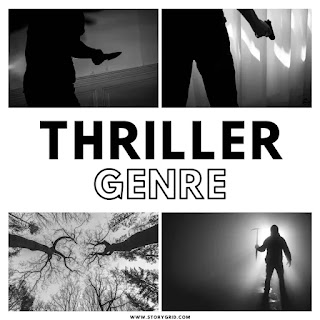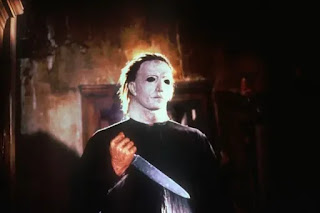Genre Research: Thriller
Common Camera Angles:
- High Angle: These shots are used in thriller films to give the effect that whatever is being looked down on appears to look powerless and vulnerable.
- Tracking/panning: Used to make it look like one of the characters is being
followed or being watched. It also helps the audience to have a full view of the scene and what is happening. - Tilting Angle: These add dramatic tension to the scene, and sometimes signify a supernatural being pushing or moving the camera.
- Low Angle: These are often used in thrillers to emphasize how powerful and intimidating a villain is. This can also make the audience feel weak and insignificant. Zoom: This gives a dramatic effect and helps to create suspense and fear of not knowing what's going to happen next. Its mostly used in these types of films see something you would have missed before zooming in.
Common Mis-En-Scene:
- Setting: Dark areas to present a freaked-out feeling to the viewer. They also use space of a character to represent their entrapment.
- Lighting: different levels of lighting used to create suspenseful tones associated with the thriller genre. Color palette is important due to the direct link to the emotions of the characters.
- Make-up: Smudges on a person’s face are used to represent damage and beatings to a character.
Common Editing Techniques:
- Jump Cuts: They help convey distortion within scenes or characters.
- Reverse Shot: Alternate between characters in a conversation.
Common Sound Techniques:
- Score: The score of these types of films are mostly used to set up the mood of the atmosphere.
- Sound Effects: they are used to make stuff sound more realistic, more loud and vivid.
- Voiceover: it helps explain what the character thinks of in the current situation they are in.
- Dialogue: represents the conversation between characters
Examples of Films:
- Joker (2019 Film)
- John Wick: Chapter 3 – Parabellum
- Truth or Dare
- The elements that caught my attention and would be suitable for our pitch would be the sound techniques, consisting of voiceover and dialogue to give plot to the story. I also would like to see most of the camera angles be used in the final task since they would help represent the action and environment of the film.




Comments
Post a Comment